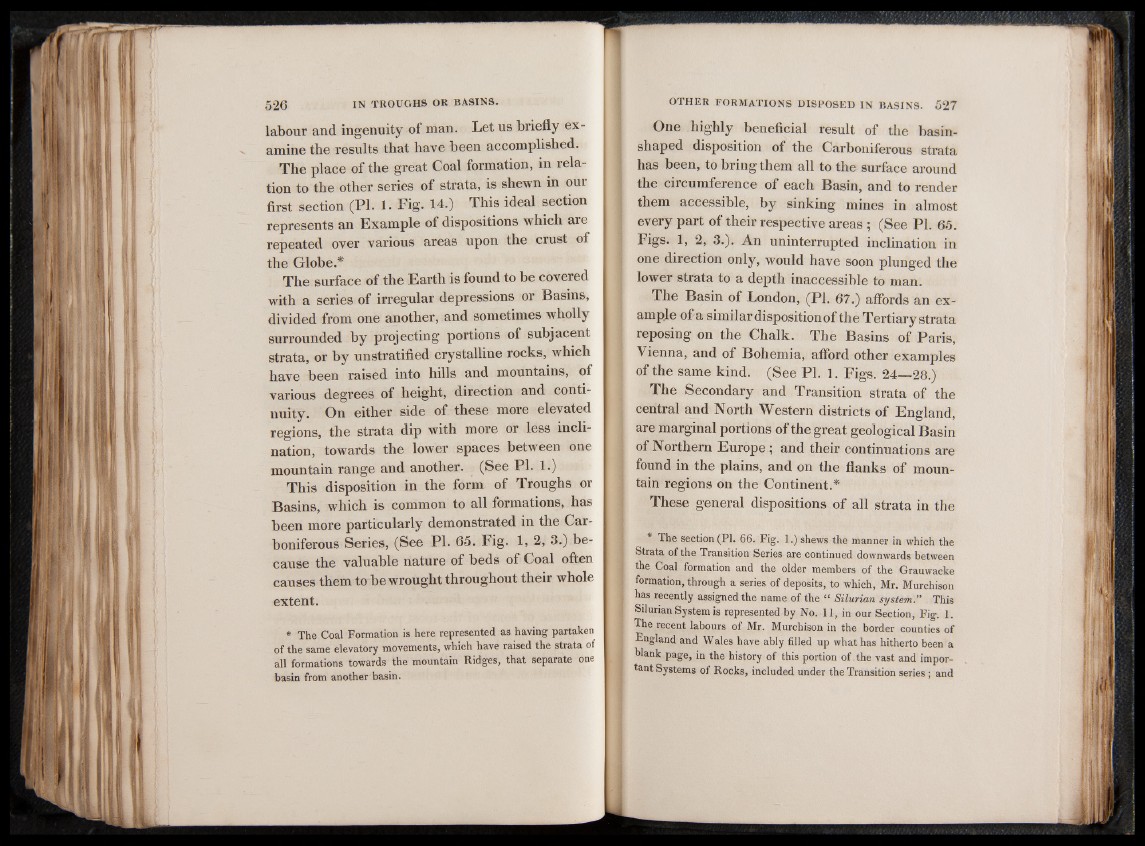
labour and ingenuity of man. Let us briefly examine
the results that have been accomplished.
The place of the great Coal formation, in relation
to the other series of strata, is shewn in our
first section (PI. 1. Fig. 14.) This ideal section
represents an Example of dispositions which are
repeated over various areas upon the crust of
the Globe.*
The surface of the Earth is found to be covered
with a series of irregular depressions or Basins,
divided from one another, and sometimes wholly
surrounded by projecting portions of subjacent
strata, or by unstratified crystalline rocks, which
have been raised into hills and mountains, of
various degrees of height, direction and continuity.
On either side of these more elevated
regions, the strata dip with more or less inclination,
towards the lower spaces between one
mountain range and another. (See PI. 1.)
This disposition in the form of Troughs or
Basins, which is common to all formations, has
been more particularly demonstrated in the Carboniferous
Series, (See PI. 65. Fig. 1, 2, 3.) because
the valuable nature of beds of Coal often
causes them to be wrought throughout their whole
extent.
* The Coal Formation is here represented as having partaken
of the same elevatory movements, which have raised the strata of
all formations towards the mountain Ridges, that separate one
basin from another basin.
One h ighly beneficial result o f the basinshaped
disposition o f the Carboniferous strata
has been, to bring them all to the surface around
the circumference o f each Basin, and to render
them accessible, by sinking mines in almost
every part o f their respective areas ; (See PI. 65.
Figs. 1 , 2, 3.). An uninterrupted inclination in
one direction only, would have soon plunged the
lower strata to a depth inaccessible to man.
The Basin of London, (PI. 67.) affords an example
of a similar disposition of the Tertiary strata
reposing on the Chalk. The Basins of Paris,
Vienna, and of Bohemia, afford other examples
of the same kind. (See PI. 1. Figs. 24—28.)
The Secondary and Transition strata o f the
central and North Western districts o f England,
are marginal portions o f the great geological Basin
of Northern E u rop e ; and their continuations are
found in the plains, and on the flanks o f mountain
regions on the Continent.*
These general dispositions o f all strata in the
The section (PI. 66. Fig. 1.) shews the manner in which the
Strata of the Transition Series are continued downwards between
the Coal formation and the older members of the Grauwacke
formation, through a series of deposits, to which, Mr. Murchison
has recently assigned the name of the “ Silurian system.” This
Silurian System is represented by No. 11, in our Section, Fig. 1.
The recent labours of Mr. Murchison in the border counties of
England and Wales have ably filled up what has hitherto been a
blank page, in the history of this portion of . the vast and important
Systems of Rocks, included under the Transition series; and